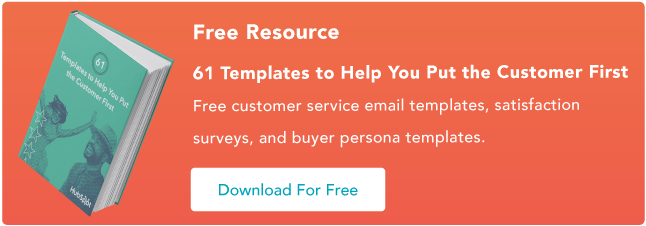Why plan a customer visit?
Jason Lemkin, the founder of SaaStr and EchoSign, has said “I never lost a customer I actually visited.” That’s a bold statement — one that's worth taking note of. But why? What is it about customer visits that has such a big impact on customer loyalty?
First of all, you get to make a stronger impression with your customers. No matter what you sell, you aren’t just selling a product — you’re also selling the people behind it.
Your vision, your passion, your knowledge are all play into the perceived value of your product or service. All of these elements come across more strongly when you visit in person. A Zoom call just isn’t enough time to go deep.
Secondly, you get to see how your customers are using your product in person. Are they constantly printing out reports to pin up on a wall? Are you seeing teams walk across the sales floor to point out something on a screen? What kind of working environment and equipment do they have? What other types of software are they using?
Everything happening behind the scenes paints a much clearer picture of who your customers are. And when it comes time to renew or jump on that next customer success call, you’ll have a lot more knowledge ready to draw on.
Finally, meeting your customers in person is a huge motivational boost! When you’re behind a screen for so long, it can start to feel like what you do doesn’t matter — or that you’re not making any real connections. But a visit to a customer’s office can change all that, and really light up your idea of “why” you do this at all.
5 Potential Goals of Your Customer Visit
Going into a customer visit with goals in mind will help you get the most out of your time there. Here are five goals to consider when planning a customer visit:
1. Understanding Their Business Goals
If you’re visiting a client, you’re likely hoping for a long term relationship. Understanding what their future goals are can help align your product with their needs. These in-depth conversations would rarely come up over a quick phone call.
2. Gathering Feedback
Customer visits provide a unique opportunity to gather honest and in-the-moment insight into what your customers need and want. When you sit next to someone who uses your product in their daily work, there’s a lot more space to have this feedback arise. And documenting it for future sales opportunities and your product team is one of the more productive actions you can take during a customer visit.
3. Referrals
In-person visits are a great time to ask for and give referrals. Ask, “Are there any other companies that you work with that you could see our product being helpful for?” Alternatively, if a pain point is mentioned by the client and you know the perfect company to help solve it, don’t be afraid to build that connection. It’s just another way you can bring value to your customers.
4. Uncovering Opportunities for Cross-Selling or Upselling
While your primary objective shouldn’t be pitching your offering at every opportunity, you might uncover a problem that your product or service can help solve. Noting these potential value-adds can make for more effective, thoughtfully targeted upsell and cross-sell conversations.
5. Testimonials and Case Studies
Customer visits can be a unique source of sales content, including pictures for case studies, video testimonials, and strong evidence-based customer stories. If you plan on making this one of your primary goals, consider asking your client to set the stage for these kinds of materials before you visit so you already know who you’ll be speaking to, before coming onsite.
How to Plan an Onsite Customer Meeting
By putting more effort in before you go, you’ll have a much better chance of achieving your goals and impressing your clients. Here are some key actions to consider when planning your customer meeting.
Thoroughly prepare before the visit.
Before you arrive, make sure you’re up to date on the state of the customer's account. Who are they usually talking to at your company? What customer service tickets have they raised lately? Are there outstanding issues that need to be addressed? These will come up during your visit.
Secondly, understand the current ecosystem your customer is working within. Is your customer in the news? What’s happening in their industry? What threats and opportunities are arising in their business? Being prepared and knowledgeable about their inner workings will make a better impression than coming in blind.
Decide who you’re meeting with.
Start by setting up a meeting with relevant company leadership. That could be the CEO, the founders, or the VP of the functional team you're working with — depending on the company's scale. Bear in mind, while this contact might be the "reason" for your visit, they're probably not who you'll be spending the most time with.
Once you have a meeting scheduled with the company's leadership, plan the rest of your day around meeting with the team leaders and employees using your product — as well as any teams that are open to signing up or expanding the current seat count or contract scope.
Make dinner reservations for you and your clients.
Traditionally, a customer visit includes taking your client out for a nice dinner as a token of appreciation. It also offers a chance for you to get to know each other outside of the limits of the work environment and form stronger relationships.
That being said, this is not a social visit. Keep your goals in mind — even outside of work hours. If you’re familiar with the restaurants in the area, choose a place that has options for every diet and has a good atmosphere for conversations. If you’re not familiar with the available options, ask the client where they’d recommend.
Complete the wrap-up report.
After the visit is over, you still have work to do. Create a wrap-up report for your internal teams back at the office. It should cover key elements of the visit like any confidentiality agreements put in place and who at your company you can share contact information or sales figures with.
Identify any action items that came up during the visit. Include any positive highlights during the meeting as well as any risks or opportunities that arose. Create a copy of the report for your client as well, to show that you were listening to their concerns and that you’re going to follow up with them.
Customer Visit Agenda Template
Use this sample agenda to plan your own customer visit.
10 am: Welcome/Office Tour (30 minutes, w/ Stacy, Raul)
- Get settled, set up a desk or boardroom for the day
11 am: Executive Meeting (1 hour, w/ Stacy, Thomas, Ankit, Shireen)
- Overview of status, product usage, any updates
- Add any bullet points you need to cover here
- Upcoming changes or challenges for the business
- New Opportunities
- Areas of concern
12pm: Lunch
1pm: User Meetings (4 hours, rotating through Marketing teams)
- Overview of new features
- Add any bullet points you need to cover here
- Gather feedback from users
- Sit with teams to review workflow
5pm: Wrap Up meeting (30 minutes)
- Process or configuration change recommendations
- General questions and answers
- Items to be addressed as part of maintenance
- Enhancement opportunities
6:30pm: Dinner at Restaurant
Internal Notes
- At the bottom of your agenda, include internal notes that are meant to be shared with your team only.
Plan for success
It’s time to get back out there and meet your clients face-to-face. By planning your customer visit ahead of time, you’re sure to achieve your goals and come out with a stronger understanding of what your clients need.
.png?width=112&height=112&name=Image%20Hackathon%20%E2%80%93%20Vertical%20(30).png)

.png)

![11 Key sales challenges for 2025 [+ how you can overcome them]](https://www.hubspot.com/hubfs/sales%20challenges%20FI.png)
![How B2C sales could shift in a recession [new data]](https://www.hubspot.com/hubfs/Recession%20sales%20strategies%20%281%29.png)
![22 Best Sales Strategies, Plans, & Initiatives for Success [Templates]](https://www.hubspot.com/hubfs/Best-Sales-Strategies-1.png)


![What Is Sales? A Quick Guide [+ Examples]](https://knowledge.hubspot.com/hubfs/what-is-sales-1-20250411-8755735.webp)



![What Is Cross-Selling? Intro, Steps, and Pro Tips [+Data]](https://knowledge.hubspot.com/hubfs/ft-cross-selling.webp)